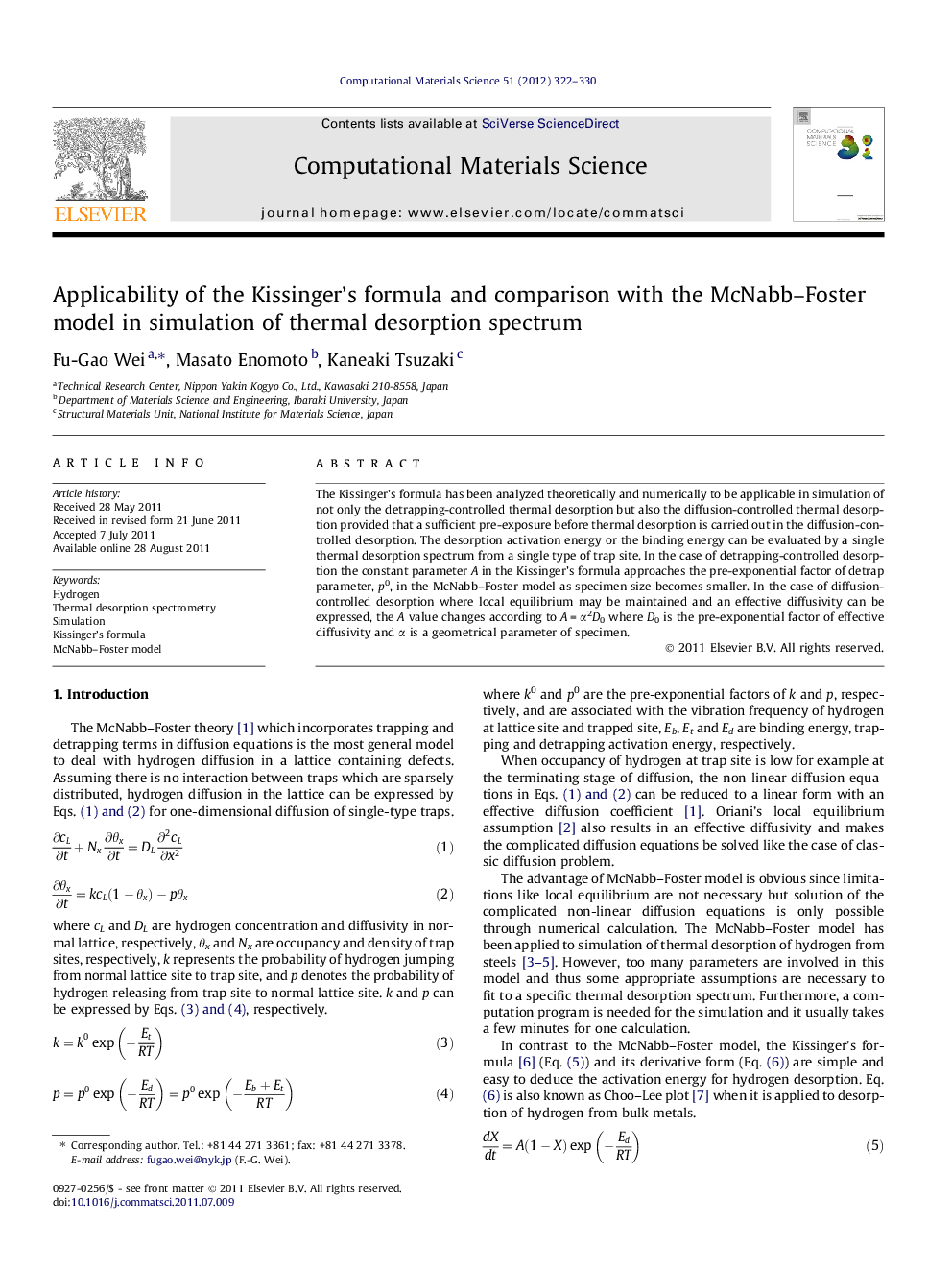| Article ID | Journal | Published Year | Pages | File Type |
|---|---|---|---|---|
| 1561841 | Computational Materials Science | 2012 | 9 Pages |
The Kissinger’s formula has been analyzed theoretically and numerically to be applicable in simulation of not only the detrapping-controlled thermal desorption but also the diffusion-controlled thermal desorption provided that a sufficient pre-exposure before thermal desorption is carried out in the diffusion-controlled desorption. The desorption activation energy or the binding energy can be evaluated by a single thermal desorption spectrum from a single type of trap site. In the case of detrapping-controlled desorption the constant parameter A in the Kissinger’s formula approaches the pre-exponential factor of detrap parameter, p0, in the McNabb–Foster model as specimen size becomes smaller. In the case of diffusion-controlled desorption where local equilibrium may be maintained and an effective diffusivity can be expressed, the A value changes according to A = α2D0 where D0 is the pre-exponential factor of effective diffusivity and α is a geometrical parameter of specimen.
► Derivation of the Kissinger formula in the case of diffusion-controlled desorption. ► Good fitting to spectra generated by the McNabb–Foster model. ► Applicability in both detrapping- and diffusion-controlled desorption. ► A simple and effective technique to deduce hydrogen trapping parameters.
